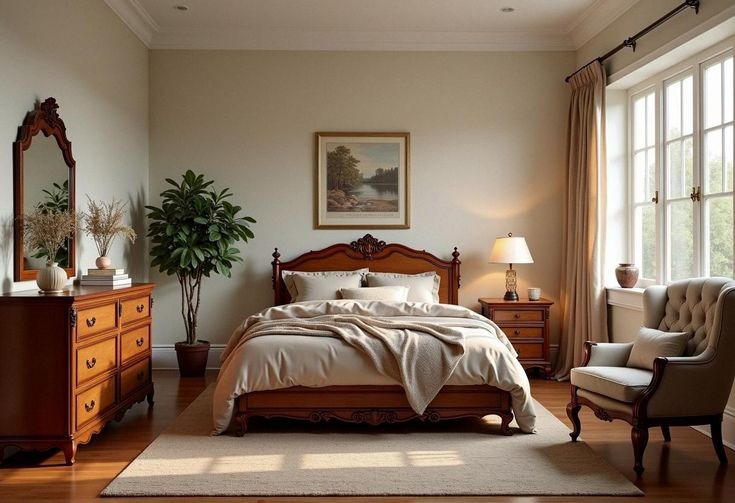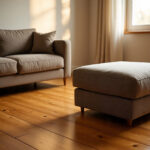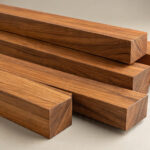How to blend traditional woodwork with modern interiors

In today’s design world, the magic often lies in the mix. One of the most striking and timeless combinations is the fusion of traditional woodwork with modern interior design. It creates a beautiful contrast that brings warmth, character, and a sense of heritage into sleek, contemporary spaces.
At TFS World, we’re expert interior designers in Bangalore who specialize in creating such harmony—where legacy meets lifestyle.

Why Traditional Woodwork Still Matters
Traditional woodwork, especially hand-carved or crafted from materials like Burma teak, tells a story. Whether it’s ornate doors, intricate columns, or richly grained flooring, it adds soul to any space. However, the key is not to overwhelm—it’s about balance.

Tips to Seamlessly Blend Traditional and Modern
Traditional woodwork, especially hand-carved or crafted from materials like Burma teak, tells a story. Whether it’s ornate doors, intricate columns, or richly grained flooring, it adds soul to any space. However, the key is not to overwhelm—it’s about balance.
- Choose the Right Wood: Materials like Burma teak, rosewood, or sheesham offer durability and elegance. These woods work beautifully as statement pieces—doors, frames, beams, or furniture bases—within a clean modern shell.
- Pair with Minimalist Elements: Let the woodwork stand out by pairing it with minimal and clean elements. Think white walls, concrete finishes, or modern metal accents. The contrast helps the traditional craftsmanship shine.
- Incorporate Modern Lighting: Use recessed lighting or sleek pendants to highlight wooden textures. Up lighting wood panels or showcasing carvings with soft warm LEDs can modernize their appearance while keeping their depth.
- Keep the Color Palette Neutral: Traditional wood tones blend best with neutral shades—creams, greys, soft pastels, or even monochrome black-and-white themes. This creates a soothing visual balance between old and new.
- Keep the Color Palette Neutral: Traditional wood tones blend best with neutral shades—creams, greys, soft pastels, or even monochrome black-and-white themes. This creates a soothing visual balance between old and new.
- Mix Materials Thoughtfully: Complement wooden textures with glass, metal, or even matte-finished ceramics. For example, a carved teak console table beneath a modern mirror creates an elegant hallway vignette.

Where to Use Traditional Woodwork in Modern Homes
- Entry Doors: Make a bold first impression with a carved Burma teak door.
- Partitions: Add a touch of heritage with wood and glass dividers.
- Ceilings & Beams: Exposed wooden beams can ground a modern loft with timeless charm.
- Furniture: A classic wooden dining table surrounded by sleek upholstered chairs blends perfectly.
Conclusion: A Home That Tells Your Story
Blending traditional woodwork with modern design is not just about looks—it’s about creating a space that reflects your taste, heritage, and lifestyle. When done right, it results in interiors that feel warm, refined, and truly one of a kind.
At TFS World, we bring years of expertise in Burma teak and custom interior solutions to help you design a home that feels timeless yet fresh.
📍 Located in Bangalore 📞 Call us: +91 9036068435 🌐 Visit: www.tfsworld.in
Let us craft a space where the past and present come together beautifully.
Related Post
 Wood Flooring Maintenance 101: Seasonal Care Guide for Indian Homes
Wood Flooring Maintenance 101: Seasonal Care Guide for Indian Homes 5 Common Mistakes People Make When Buying Wooden Doors (And How to Avoid Them)
5 Common Mistakes People Make When Buying Wooden Doors (And How to Avoid Them) Teak Wood Main Door Price in Bangalore: Complete 2025 Price Guide
Teak Wood Main Door Price in Bangalore: Complete 2025 Price Guide Best Wood for Furniture in India: The Complete Comparison Guide
Best Wood for Furniture in India: The Complete Comparison Guide Teak Wood Price in Bangalore – Latest Rates & Quality Options
Teak Wood Price in Bangalore – Latest Rates & Quality Options What is the Difference Between Sawnwood and Thermowood?
What is the Difference Between Sawnwood and Thermowood? Best Wood For Furniture: 12 Expert Picks You Should Know
Best Wood For Furniture: 12 Expert Picks You Should Know What is the Difference Between Teak and Burma Teak Wood?
What is the Difference Between Teak and Burma Teak Wood? What is Air Drying in Timber?
What is Air Drying in Timber? Why Burma Teak is the King of Wooden Flooring Materials
Why Burma Teak is the King of Wooden Flooring Materials The Bee Hole Phenomenon in Burma Teak: A Unique Feature
The Bee Hole Phenomenon in Burma Teak: A Unique Feature Not All Timber Can Be Used for All Purposes
Not All Timber Can Be Used for All Purposes Environmental Impact of Wood’s Carbon Sequestration
Environmental Impact of Wood’s Carbon Sequestration


